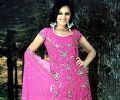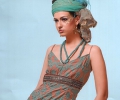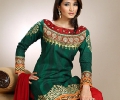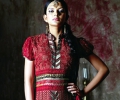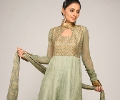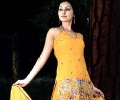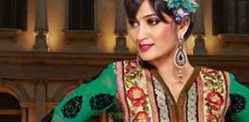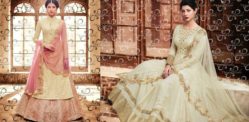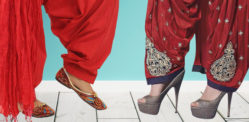The Salwar Kameez today has a very rich history
Salwar Kameez is one of the most popular South Asian apparel worn by women. It is a suit made up of three items of clothing, the Salwar which is the trouser part; Kameez which is a long tunic worn over the Salwar, and a Duppata. Chunni or Shawl which is a long piece of fabric which may be worn around the head, draped over the chest or over both shoulders to complete the suit.
The Salwar is usually loose flowing which narrows at the ankles. The waist is purposely made much wider than the waist of the wearer and it gathers at the hip. A draw string is tied or an elastic is used to adjust it to different waist sizes.
The Kameez is a long tunic top with slits on the sides. The length of the Kameez varies depending on the style. Some Kameez styles are tight fitting at the top part down to the waist and then are loose.
Salwar Kameez is a dress sense highly associated with the North of India, Pakistan Afghanistan and Bangladesh. Especially, the Punjab region of India, where women commonly wear this outfit, commonly called a ‘Punjabi suit.’
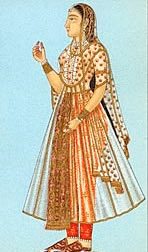
In the history of the textiles, the Salwar Kameez has a definitive place. It traces as far back as 400 CE when the Indian subcontinent was invaded and rules by central Asians. There is also a Persian connection with the garment. Influence of Persian styles on textiles and clothing in India trace back to the Kushan dynasty (001 AD). Coinage and stone palettes found from the Indo-Scythian/Parthian period, show Greek and Persian influences in Indian clothing.
During the Mughal era, women’s dress of the empire consisted of close fitting trousers paired with a bodice (called Angharakha or Kameez) that came down to the end of the Salwar and worn with a half-sleeved embroidered open Jacket with a delicate transparent Shawl (called Paramnarm meaning extremely soft) draped like a sari.
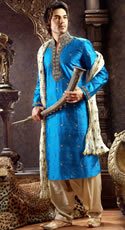
Like all clothes, the Salwar Kameez has also transformed with time to suit the current day demand of the modern South Asian women.
The fashion industry has converted the Salwar Kameez from a regional court garment to the national urban outfit for women.
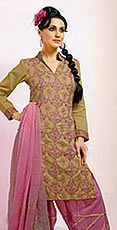
The Salwar Kameez today has a very rich history and is an adaptation of the clothing from the Mughal era.
There are many different styles and designs of the Salwar Kameez for women. Fabrics used for Salwar Kameez include Cotton, Silks, Muslins, Brocades, Velvets, Organzas, Wool broadcloth; the patterns include, Block-printed, Kalamkari, Ikkat, Patola, Deccan himroo, Batik, Bandhani, Leheriya, Khadi; the types of embroidery include, Applique or Phoolpatti, Bagh, Badla, Abhla or Shisha, Resham, Sitara, Jaali, Tambour, Zardozi, Zari, Aari, Phulkari, Chikankari, Kashmiri kashida, Soof, Gota, Ahir, Kantha, Katiawari, Kutchi, Sindhi, Sozani or Dorukha, and the popular styles of today include the following:
- Punjabi – Consists of a loose fitting Salwar, straight cut Kameez and a long scarf called Dupatta or Chunni.
- Churidar – A semi fitted snug ruffled Salwar or narrow Salwar worn with dress-like Kameez and Duppata.
- Patiala Style – A very baggy Salwar, regular Kameez and matching Dupatta.
- Trouser Suits – A short Kameez called Kurti and paired with narrow straight cut Salwar.
- Anarkali – A Kameez with snug empire waist bodice with a panelled and flared skirt piece attached to it and paired with Churidar style or Salwar style trousers.
- Afghani – A multi panelled Kzmeez that looks like a Chador paired with very baggy Salwar which has an embroidered cuff called ‘ponchay’ at the ankles and looks like harem pants.
- Anghrakha Style – Kameez has an overlapped front in its bodice often worn with Cchuridar style trousers and transparent Duppata.
- Ready to Wear – Salwar Kameez made in standard measurements which can be mixed and matched. The 3 parts of the outfit can be mixed and matched to achieve fashionable combinations.

The Salwar Kameez, an outfit with strong roots from South Asia has survived the changes in time and fashion by maintaining a firm position in the wardrobe of many generations of South Asians both in India, Pakistan, Bangladesh and abroad.
Check out our gallery of photos showing you the various fantastic styles of Salwar Kameez available.





















































